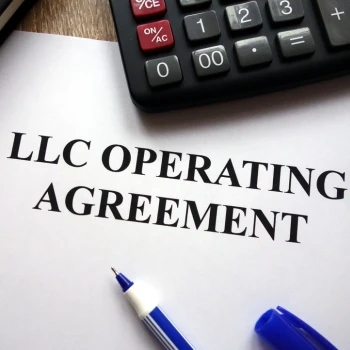How to Start a Business in California (Step-by-Step)
Starting a business in California can be an exciting and rewarding experience, thanks to the state's strong economy, diverse industries, and business-friendly environment.
As a qualified business expert, I have helped countless entrepreneurs navigate the complexities of starting and growing their businesses.
Whether you have a new business idea or want to expand an existing one, California offers a wide range of opportunities.
This article will guide you through the process of starting a business in California, from choosing your business structure to obtaining the necessary licenses and permits.
Quick Summary
- Choosing the right business entity, like an LLC or Corporation, is crucial in California due to its tax and legal implications.
- To operate legally in California, you need a business name, tax IDs, and to register with the state.
- California has more than 4 million small businesses, making it the largest state economy in the U.S., contributing \$3.6 trillion to the nation’s GDP in 2023 alone.
Step-by-Step California Business Formation Process

Step 1: Choose Your Business Structure
Before starting your business, you need to decide which type of entity suits your goals. Here’s a breakdown of the most common structures:
| Business Structure | Description | Tax Implications in Colorado |
|---|---|---|
| LLC (Limited Liability Company) | Protects personal assets, flexible management | Pass-through taxation; subject to LLC fee |
| Corporation | Separate entity; can issue stocks | Double taxation: corporate & personal income tax |
| Partnership | Shared ownership, simple structure | Pass-through taxation, personal liability for partners |
| Sole Proprietorship | Single-owner, simplest form of business | Pass-through taxation; income taxed as personal income |
| Nonprofit | Organization focused on charitable, educational, or other public-benefit purposes | Tax-exempt status if approved by IRS; donations are tax-deductible |
| LLP (Limited Liability Partnership) | Partnership with liability protection for partners | Pass-through taxation; personal liability protection for partners in certain circumstances |
Step 2: Name Your Business
In California, all business names must be unique, and they cannot infringe on any existing trademarks. You can easily check name availability through the California Secretary of State’s website.
Once you’ve chosen a name, you’ll likely need to file a Fictitious Business Name Statement (also known as a fictitious business name or DBA (“Doing Business As”), especially if you’re using a name that doesn’t directly match the legal name of your business entity [1].
It’s also smart to conduct a trademark search on the U.S. Patent and Trademark Office’s (USPTO) website to identify any trademarks that might already be associated with your name.
Step 3: Register Your Business
Once you have a name, it’s time to register your business with the California Secretary of State.
The primary document you'll file is your Articles of Incorporation if you're forming a corporation, or Articles of Organization if you're forming an LLC in California.
However, other business types have specific documents [2]:
- LPs (Limited Partnerships): File a Certificate of Limited Partnership with the Colorado Secretary of State.
- LLPs (Limited Liability Partnerships): File a Statement of Registration to officially register your LLP.
- Nonprofits: File Articles of Incorporation for a Nonprofit Corporation, and later apply for federal tax-exempt status with the IRS using Form 1023 [3].
- Sole Proprietorship: You don’t need to file formation documents, but you may need to register a Doing Business As (DBA) name with your county if you're using a business name other than your own.
- Partnerships: You don’t need to file with the state, but it’s recommended to create a Partnership Agreement to outline the roles and responsibilities of each partner.
Be aware that if you’re forming an LLC, the California Secretary of State requires an annual minimum franchise tax of \$800, which is due each year, even if you don’t earn any income.
California law also requires all business entities to designate a Registered Agent (also called an Agent for Service of Process) who can receive legal documents on behalf of your business.
The registered agent must be a California resident with a physical street address in the state and be available during standard business hours.
You can serve as your own registered agent if you meet these requirements, or hire a professional registered agent service.
Step 4: Write an Operating Agreement

An Operating Agreement is a legal document that outlines how your business will be run, especially important for LLCs and partnerships.
While California doesn't legally require an Operating Agreement for LLCs, it's highly recommended as it establishes management structure, ownership percentages, profit and loss distribution, and procedures for adding or removing members.
In California, without an Operating Agreement, your LLC will be governed by default state laws, which may not align with your business goals.
For partnerships, a Partnership Agreement serves a similar purpose and should outline each partner's roles, responsibilities, and profit-sharing arrangements.
Step 5: Get Federal and California State Tax IDs
To pay taxes and hire employees, small business owners need to get a Federal Employer Identification Number (EIN) from the Internal Revenue Service (IRS).
California also requires a state tax ID for sales tax collection and other state taxes.
Key California Tax Information:
- Sales Tax: California has a base state sales tax rate of 6.0%, but the total sales tax rate ranges from 7.25% to over 10% when including local taxes, making it one of the highest in the nation.
- Personal Income Tax: California has nine tax brackets ranging from 1% to 12.3% for regular income, with an additional 1% Mental Health Services Tax on income over \$1 million.
- Corporate Income Tax: California corporations pay an 8.84% flat rate on net income, plus a minimum franchise tax of \$800 annually.
- LLC Tax: LLCs pay a minimum annual franchise tax of \$800, plus an additional fee based on gross receipts ranging from \$900 to \$11,790 for LLCs with receipts over \$250,000.
Step 6: Open a Business Bank Account
To separate your personal and business finances as a sole proprietorship, open a business bank account. You’ll need documentation such as your business registration, Employer Identification Number, a valid ID, and a comprehensive business plan if required.
Step 7: Obtain Required Licenses and Permits
Depending on your business type and location, you may need a general business license and industry-specific permits.
If you also plan to sell goods in California, you need to register with the California Department of Tax and Fee Administration (CDTFA) to get a seller's permit.
Step 8: Get Business Insurance
California requires workers' compensation insurance for businesses with employees, and other types of insurance like general liability or professional liability may be necessary.
Consult with local agents to understand the local zoning regulations and the coverage you need to ensure your business stays protected.
Why Start a Business in California?

- Economic Advantages: The state provides various tax and fee administration benefits, incentives, and a business-friendly regulatory environment. In addition, California is home to thriving industries such as technology, entertainment, agriculture, and manufacturing.
- Market Opportunities: California's population is diverse and large, which means there is a vast consumer market. Whether you’re targeting tech-savvy millennials in Silicon Valley or tourists in Los Angeles, the state offers excellent market opportunities for businesses across many sectors.
- Infrastructure Benefits: California’s logistics infrastructure, including ports, highways, and airports, makes it easy to operate in the state. It’s also home to cutting-edge technology and a highly skilled workforce to enable better financial projections for your business.
Employment and Labor Laws in California
California has strict labor laws that all employers must follow. These include wage requirements, workplace safety regulations, and rights for employees:
- Minimum Wage: California has a higher minimum wage than the federal standard, and it can vary depending on the city or county local regulations.
- Workers' Rights: In California, workers are entitled to a range of protections that promote fair treatment in any legal business workplace. These include paid sick leave, family leave, and anti-discrimination laws.
- Workplace Safety: California businesses are required to follow strict safety regulations set by the Occupational Safety and Health Administration (OSHA) and the state’s own Division of Occupational Safety and Health (Cal/OSHA).
Financing Your California Business
California offers several funding options for new ventures to obtain business finances:
- SBA Loans: These US Small Business Administration loans provide low-interest rates and longer repayment terms, ideal for startups.
- State Grants: California has state-specific grants for new ventures, but they can be highly competitive.
- Angel Investors & Venture Capital: The state, especially Silicon Valley, is home to many investors offering funding in exchange for equity.
- Bank Loans: Traditional small business loans form banks are available but are harder to secure for new businesses and require strong credit.
- Alternative Financing: Crowdfunding and peer-to-peer lending are additional options for raising capital
Common Mistakes to Avoid

- Not registering business entities with the right authorities.
- Missing important tax filings.
- Forgetting local zoning and permit requirements.
- Failing to protect your business name or trademark.
Ongoing Compliance Requirements
Here are 3 key requirements you need to know:
1. Annual Reports
In California, businesses must file a Statement of Information every year or two.
For corporations, the report is due within 90 days of registration and every year after, while LLCs file every two years. Failing to file can result in penalties or the suspension of your business.
2. Regular Tax Filings
Businesses in California need to file taxes regularly, including sales tax, income tax, and payroll tax.
California also has these four state payroll taxes [4]:
- Unemployment Insurance (UI) and Employment Training Tax (ETT) are employer contributions.
- State Disability Insurance (SDI) and Personal Income Tax (PIT) are withheld from employees’ wages.
3. Business License Renewals
You must renew your business license annually, depending on where your business is located.
Each city or county has its own renewal deadlines, so be sure to check with local authorities to avoid disruptions.
Case Studies/Success Stories

1. Dropbox
Dropbox started as a small tech startup in Silicon Valley with just three employees.
In just five years, it grew to more than 100 employees, thanks to the venture capital (VC) funding available in the area. This funding allowed the company to quickly scale its operations and expand its cloud storage service.
Dropbox's success story highlights how access to venture capital and the thriving tech ecosystem in Silicon Valley can help small businesses grow rapidly and become major players in their industry.
2. In-N-Out Burger
In-N-Out Burger, a family-owned restaurant chain, started in California and quickly became a favorite for many.
Despite the state's strict health and safety regulations, the company successfully navigated these rules by focusing on good marketing strategy, high-quality food, great customer service, and staying compliant with local laws.
This dedication to quality and consistency helped In-N-Out grow into a beloved fast-food brand, with a loyal customer base not only in California but across several other states.
FAQs
1. How Long Does it Take to Start a Business in California?
It can take anywhere from a few days to several weeks, depending on the complexity of your business legal structure and how quickly you complete the required filings.
2. What Are the Total Costs Involved?
The total costs involved vary, but initial fees for business registration, licenses, and permits can range from \$100 to \$1,000 or more, depending on your business type and location.
3. Do I Need a Lawyer To Start a Business?
While not mandatory, consulting with a lawyer is highly recommended, especially if you’re forming a corporation or dealing with a complex regulatory environment.
4. How Do I Find Customers in California?
To find customers in California, focus on building a solid marketing plan and business strategy that targets California’s diverse population. Use social media, networking, and online advertising to reach your target market and grow your business.
5. What Are the Biggest Challenges for New Businesses?
The biggest challenges for new businesses include dealing with state rules and regulations, finding the money to get started, and attracting customers.
Starting a business in California offers great opportunities, but it’s important to understand the local requirements and regulations.
By following the steps outlined above and taking advantage of the state's business climate, you can lay the foundation for a successful venture.
References:
- https://www.sdarcc.gov/content/arcc/home/divisions/recorder-clerk/fictitious-business-name.html
- https://bizfileonline.sos.ca.gov/forms/business
- https://www.irs.gov/forms-pubs/about-form-1023
- https://edd.ca.gov/en/payroll_taxes/what_are_state_payroll_taxes/



Starting a business in California seemed complicated, but the step-by-step process here really simplified it.